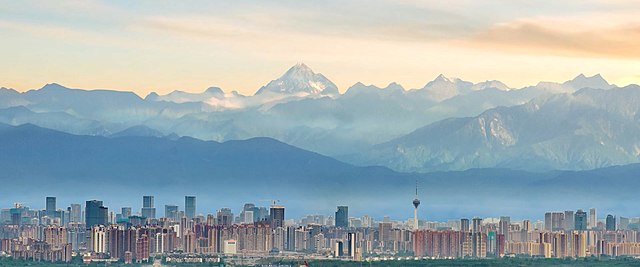Luzhou (simplified Chinese: 泸州; traditional Chinese: 瀘州; pinyin: Lúzhōu; Sichuanese Pinyin: Nu2zou1; Luzhou dialect: ), formerly transliterated as Lu-chou or Luchow, is a prefecture-level city located in the southeast of Sichuan Province, China. It is also known as the "Liquor City" (酒城). It was named Jiangyang (simplified Chinese: 江阳; traditional Chinese: 江陽; pinyin: Jiāngyáng) until the Northern and Southern dynasties. Situated at the confluence of the Tuo River and the Yangtze River, Luzhou has been Sichuan province's largest port in both size and output since Chongqing's separation from Sichuan in 1997.
As of the 2020 Chinese census, its population was 4,254,149. Of these, 1,241,273 lived in the built-up (or metro) area made of Jiangyang and Longmatan districts, as Naxi district is not conurbated yet.
Luzhou borders Yunnan, Guizhou and Chongqing provinces. As the only geographic junction of the four provinces, it was an important port location in ancient China. After the PRC was founded in 1949, Luzhou became the capital of southern Sichuan province. In 1983, Luzhou was upgraded to prefecture-level city status.

Luzhou in 2008
Bao'en Pagoda
Scene of downtown Luzhou
A rural township of Luzhou
Sichuan is a province in Southwestern China occupying the Sichuan Basin and Tibetan Plateau between the Jinsha River on the west, the Daba Mountains in the north and the Yungui Plateau to the south. Sichuan's capital city is Chengdu; its population stands at 83 million. Sichuan neighbors Qinghai to the northwest, Gansu to the north, Shaanxi to the northeast, Chongqing to the east, Guizhou to the southeast, Yunnan to the south, and Tibet to the west.
Image: 雪山下的成都市天际线 Chengdu skyline with snow capped mountains (cropped)
Image: Leshan Giant Buddha (1)
Image: 1 huanglong 2
Image: Mount Emei Sunrise above the clouds








